Drawn into Nature
A composite sketch of an Indian rhinoceros created using only second-hand information is an amazing thing to behold. Sensitive, soft folds of skin become riveted plates of armor. A mini-horn replaces the gentle slope of the upper back. To the world-at-large, a solitary herbivore prone to thermoregulation issues becomes an impenetrable, raging beast.
At least, that’s what happened with German painter and printmaker Albrecht Dürer’s 1515 woodcut of a rhinoceros, leading to mass misinformation about the animal that took hundreds of years to undo. The societal effect of Dürer’s drawing underscores the importance of inquiry-led creative work. To this end, Stamps lecturer Patricia Ferrer Beals wants to ensure that her students at the Penny W. Stamps School of Art & Design engage in in-depth, primary research.
In October 2016, Ferrer Beals took students in her Science Illustration class on a research camping trip to Michigan’s Sleeping Bear Dunes to gather first-hand observations and field sketches of lakeshore ecosystems. This research fueled concept art for the class client: the Matthaei Botanical Gardens at the University of Michigan. The class is working with the education team at Matthaei to create interpretive materials for Matthaei’s Great Lakes Gardens.
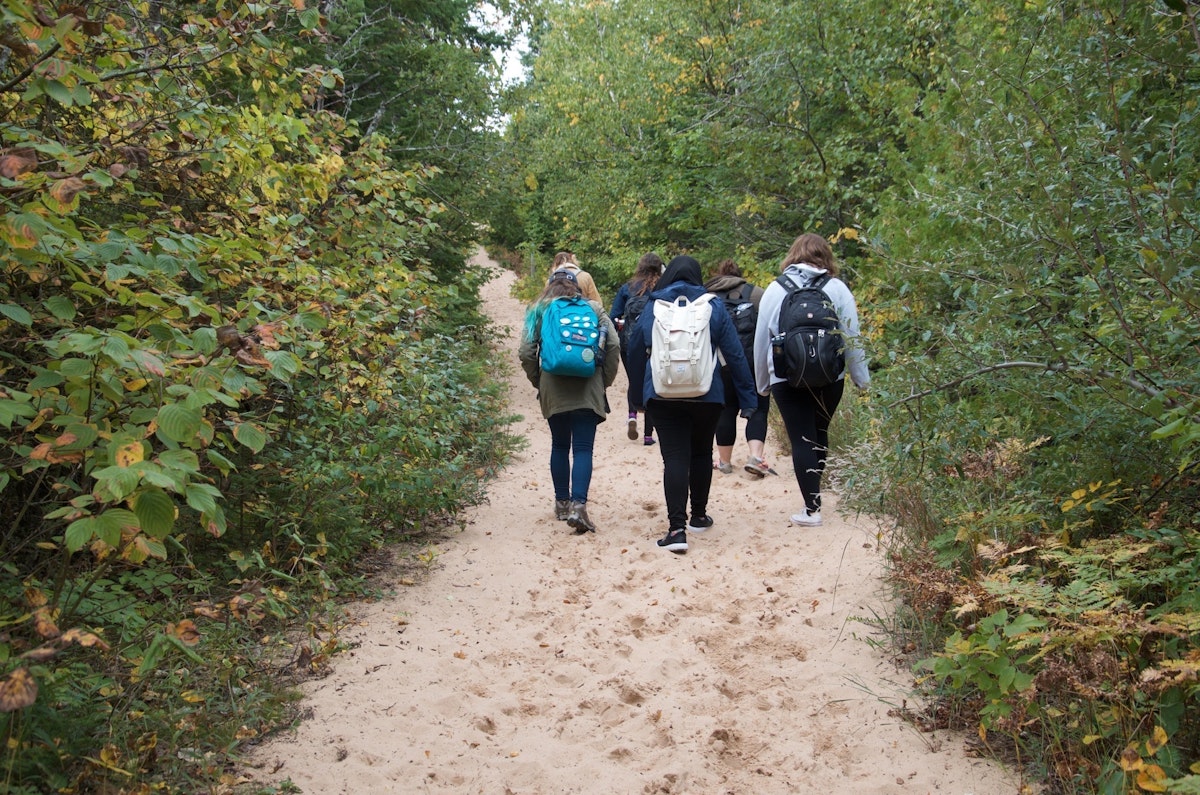
A collection of ten garden spaces representing the unique habitats and landscapes in the Great Lakes region, the Great Lakes Gardens at Matthaei opened in 2013. Currently, each garden has an interpretive text panel with information about the habitat, but Catriona Mortell-Windecker, Education and Interpretation Program Manager at Matthaei, envisions more for the space. “Work by Stamps students can really enhance the visitor experience by providing deeper information about key plants found in the habitats represented in the gardens,” Catriona said.

At the top of the term, Ferrer Beals’ class met with Bob Grese, Director of the Matthaei Botanical Gardens and Nichols Arboretum. Grese gave the students a tour of the gardens and talked through his client needs. Perhaps most importantly, the group discussed the potential impact the gardens could have on visitors — a subject that Ferrer Beals is particularly passionate about. “Understanding the dynamics of plants and their ecosystems creates a culture that cares for their natural areas and the diverse species that live there,” Ferrer Beals said. “This awareness is essential in environmental protection and preservation.”

Ferrer Beals’ class trip to Sleeping Bear Dunes went a long way in educating students on the context of the work they were creating with Matthaei. “Sure, you could read about it,” says Alexa Caruso (BFA ’18), “but getting to experience what the environment is like really helps to make you more invested in the project and to understand what conditions flora like this grows in (or doesn’t grow in).” Carly Francis (BFA ’18) added, “Communities learn from artists’ work and putting forth pieces of art that are knowledgeable is a responsibility of an artist.”
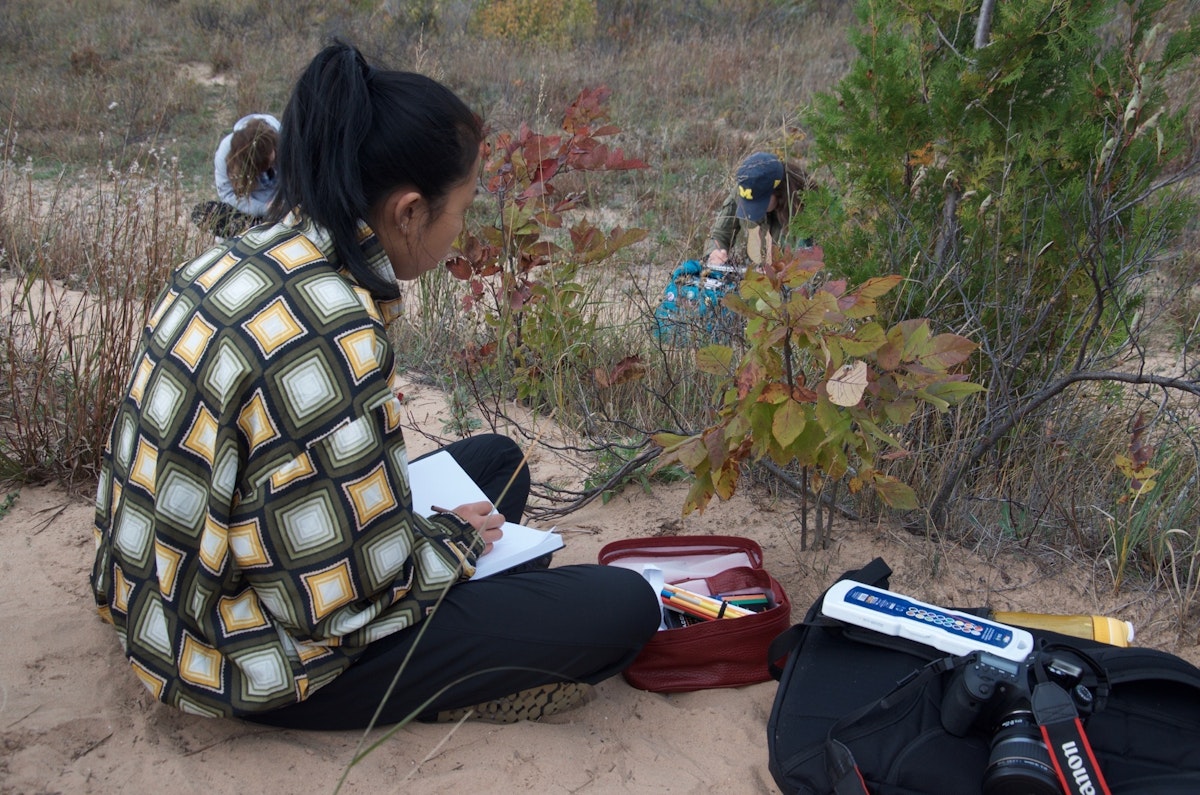
In addition to teaching at Stamps, Patricia Ferrer Beals comes from a professional background of science illustration and exhibition contextualization. Her work can be seen around Ann Arbor at the Ann Arbor Hands On Museum and at the Matthaei Botanical Gardens and Nichols Arboretum. In addition to reinforcing the importance of inquiry-led work, productive client relationships, and best practices in freelancing, Ferrer Beals enjoys introducing students to Michigan’s natural ecosystems. “This project gives students an opportunity to explore the natural world and make some of their own connections to share with others,” she said. “Science Illustration as a profession has a wonderful purpose to educate and beautifully illustrate the natural world.”
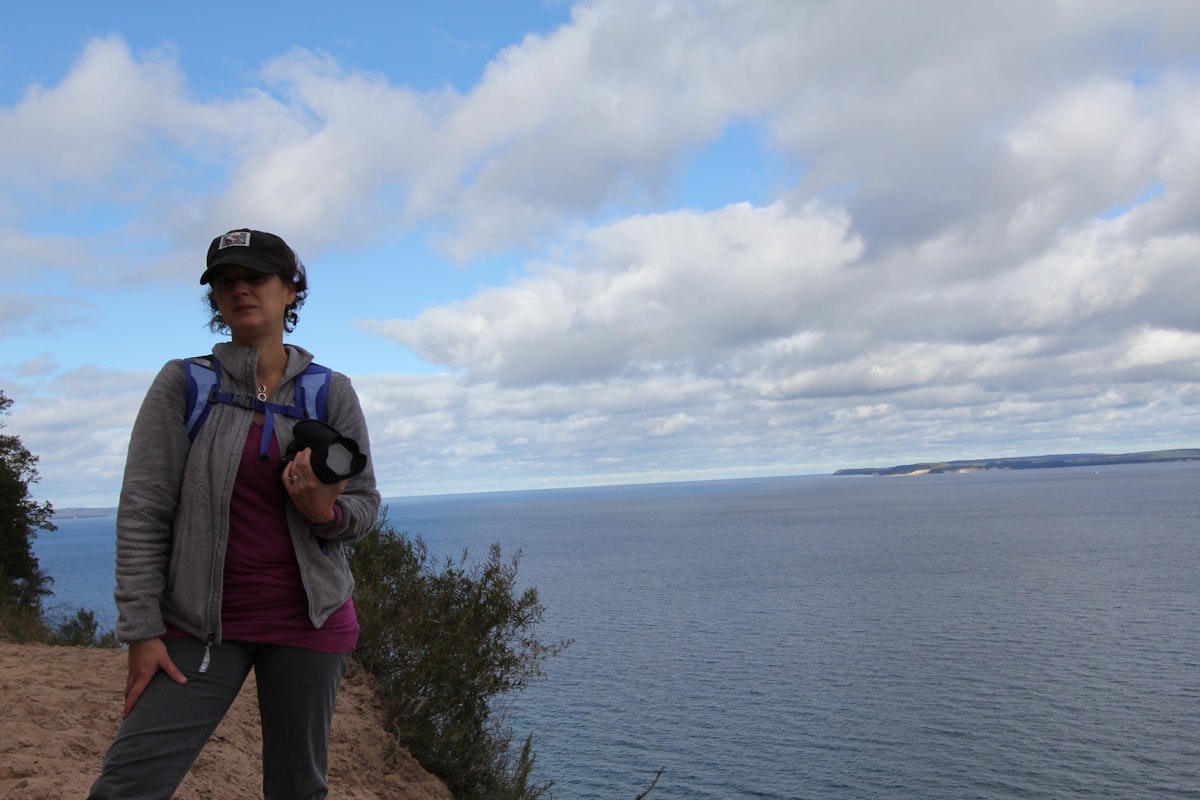
DIY Nature Studies
Thinking of heading out into the wilderness with your sketchbook? Read on for top tips for a successful nature study session from Alexa Caruso (BFA ’18) & Carly Francis (BFA ’18).
Backpack checklist:
- Small sketchpads
- Pencils
- Pens
- Graphite
- Colored Pencil
- Watercolors
- Camera
Alexa: You don’t need a giant sketchbook. If you’re out in the fields you’re just making small studies. You can worry about making a big drawing when you get back home. A camera can help you make note of color so that you have a reference to look back on.
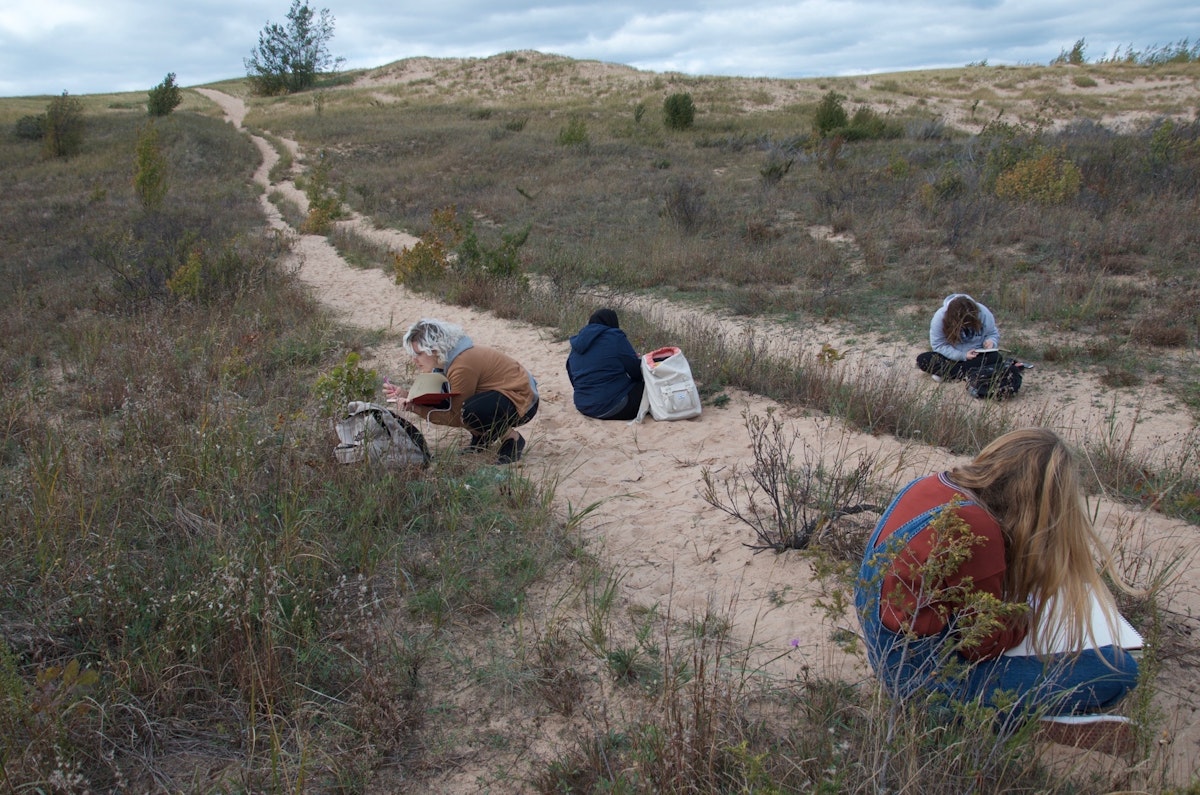
Carly: Also, bring different types of media if you can. Describing color and relationships through different media allows various aspects of the object to emerge and be recorded.
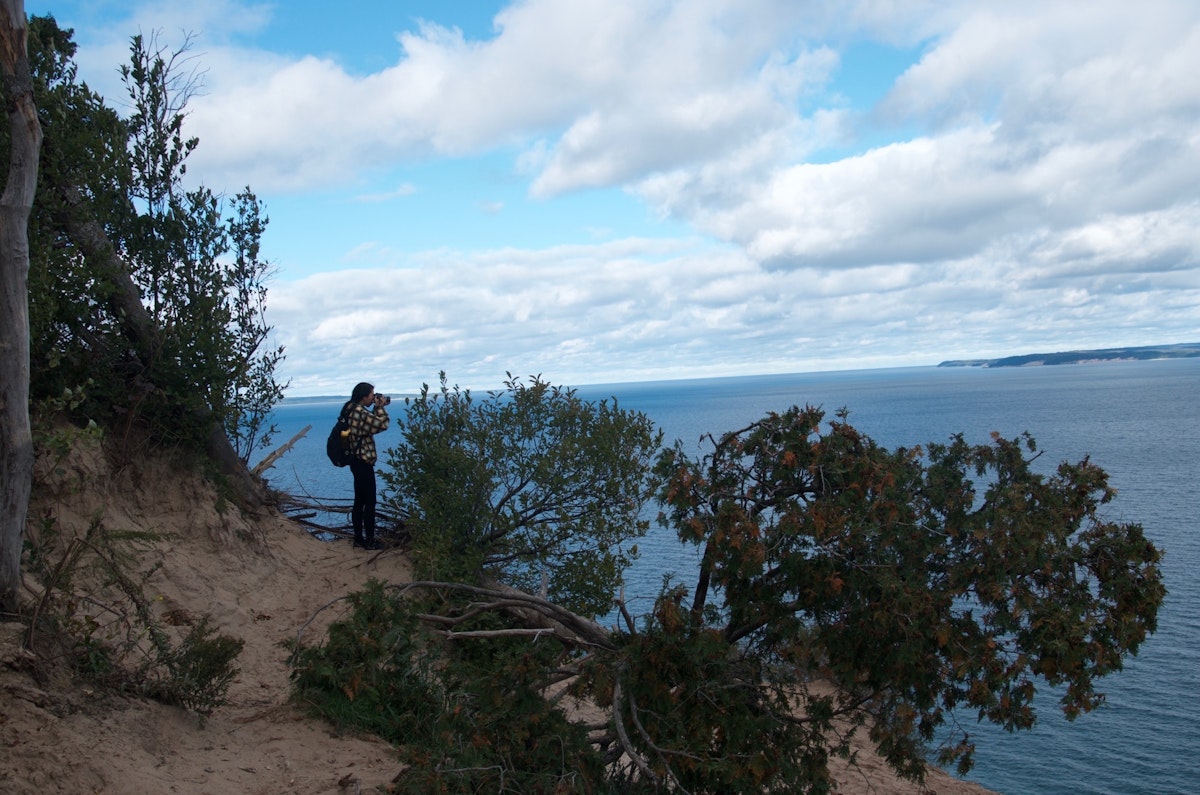
Alexa: Remember to enjoy yourself, too. When we were at Sleeping Bear Dunes, the surprising combination of all types of trees, grasses, plants, animals, and insects within these differing ecosystems made me recognize I had travelled to one of the most naturally beautiful places in the world.
Carly: It was simply gorgeous.
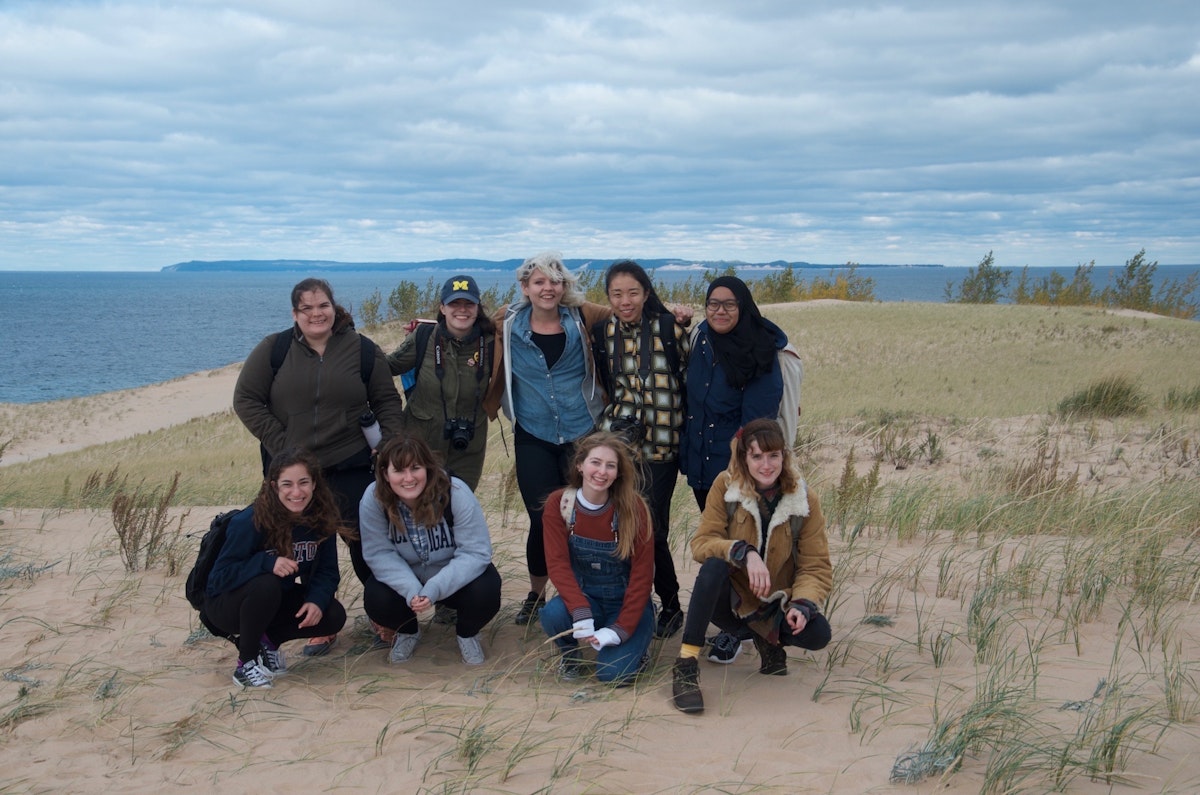
Images by Heidi Liu (BFA '17) and Patricia Ferrer Beals